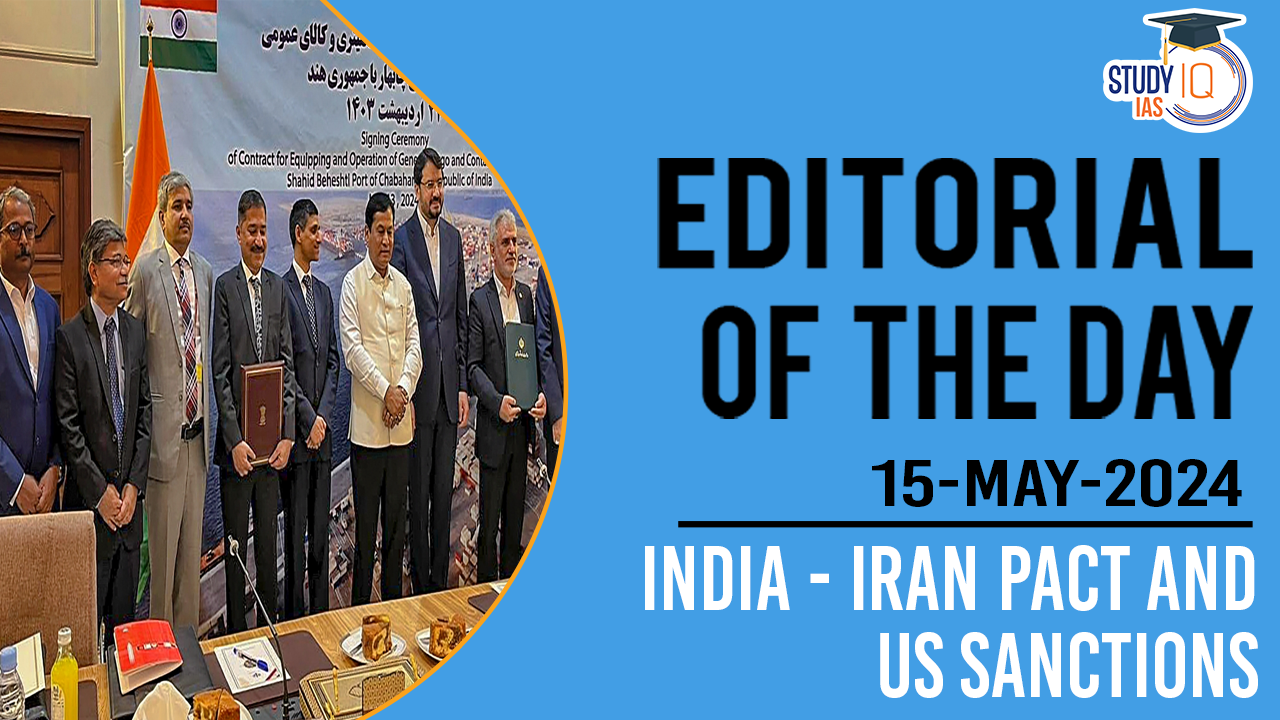Table of Contents
Context: The U.S. State Department noted the new agreement (10-year agreement between India and Iran aims to develop the Chabahar port) and indicated that there is no specific exemption for it from U.S. sanctions on Iran.
Background of U.S. Sanctions
- Sanctions on Iran: The United States has imposed a range of sanctions on Iran over the years, primarily targeting its nuclear program, military activities, and economic sectors to curb Iran’s influence and destabilising activities in the region.
- Iran Freedom and Counter-Proliferation Act (IFCA) 2012: This act was a significant part of the U.S. sanctions regime against Iran.
- It aimed to strengthen and expand sanctions against Iran, specifically targeting sectors like energy, shipping, and shipbuilding, as well as entities involved in these sectors.
The Trump Administration’s Exemption in 2018
- Special Exemption for Chabahar Port: In 2018, the Trump administration granted a special exemption to India, allowing it to invest in and develop the Chabahar port in Iran.
- This exemption was part of a broader strategy to support Afghanistan’s development and stability, given that Chabahar provides Afghanistan with an alternative trade route that bypasses Pakistan.
- Carve-out Clause in IFCA: The exemption was facilitated by a carve-out clause in the IFCA, which allowed the U.S. President to authorise exemptions to sanctions for humanitarian aid and projects that support Afghanistan’s economic development.
- The clause states that the President can provide exemptions for the reconstruction of Afghanistan, provided it aligns with U.S. national interests.
Current Situation and Potential Implications
- New Agreement and U.S. Position: The recent 10-year agreement between India and Iran to develop Chabahar port has raised questions about whether the 2018 exemption will still apply.
- The U.S. State Department’s statement indicates no specific exemption for the new agreement, suggesting potential risks for entities involved in the project.
- Potential Sanctions Risk: Without a clear exemption, entities participating in the Chabahar port project might face U.S. sanctions.
- This could affect the project’s financing, development, and operations, and may deter other international partners from engaging in the project.
- Diplomatic and Economic Impact: The ambiguity around the exemption could strain India-U.S. diplomatic relations and impact India’s strategic interests in the region.
- It might also affect Afghanistan’s economic development if the Chabahar route becomes less viable due to sanctions.
- Regional Impact: The new agreement could affect India’s economic and geopolitical interests in the region, especially concerning trade routes and relations with Afghanistan.
- Ongoing Review: The Indian government is reviewing the U.S. statement to determine its impact on India’s dealings with Chabahar.
- This review will consider the potential economic and geopolitical implications and guide India’s future actions concerning the port project.
| Broader Strategic Implications of the Chabahar Port Development |
Strategic Location:
Alternative Trade Routes:
Countering China’s Influence:
Regional Stability and Development:
|
Additional Information
Six-Month Waiver: A six-month waiver on oil imports from Iran to India ran out in 2019. Since then, India has complied with the U.S. demand to “zero out” its purchases of Iranian oil.


 UNEP Champions of the Earth Award: UN's ...
UNEP Champions of the Earth Award: UN's ...
 Shilp Didi Programme: Empowering Women A...
Shilp Didi Programme: Empowering Women A...
 Is the Falling Rupee a Cause for Alarm?
Is the Falling Rupee a Cause for Alarm?

























